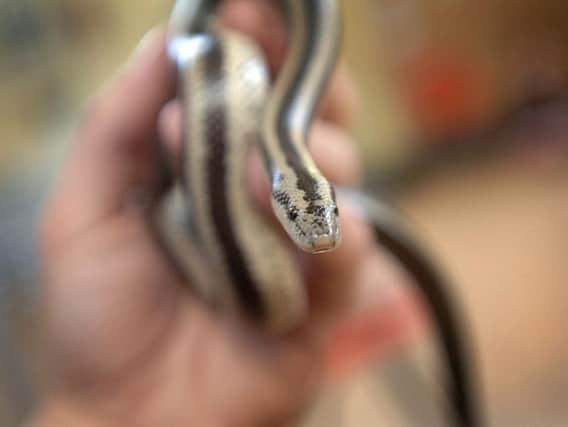Dangerous wild animals are living at private addresses in Calderdale


From deadly snakes and crocodiles, to lions, leopards, bears and even an elephant - Born Free reveals that nearly 5,000 dangerous wild animals are being privately kept right here in Britain.
READ: Halifax granddad who battled cancer back on our TV screenA survey conducted by the Born Free Foundation has revealed that 4,798 dangerous wild animals are being privately kept in Great Britain - 93 of which are living in Yorkshire.
Advertisement
Hide AdAdvertisement
Hide AdIn Calderdale the Council revealed that ten venomous snakes lived in the area.
In total it was revealed that in Yorkshire among the 93 dangerous wild animals that reside in the area, there are at least: nine cats including 6 Leopard Cats; 10 antelopes; 25 Ostriches; One Crocodile; 33 snakes including Western Diamondback Rattlesnakes, Monocled Cobras and Puff Adders; and 15 bison.
READ: Nine weeks of roadworks on main route through Sowerby BridgeNow the international wildlife charity is petitioning the UK Government to immediately review the law, and put a stop to some of the world’s most remarkable but often deadly creatures being in kept in unsuitable environments.
While an estimated 11 million people own a pet in the UK, Born Free’s research asked every local council across England, Scotland and Wales which dangerous wild animals are currently licenced to be kept in private hands.
Advertisement
Hide AdAdvertisement
Hide AdThe entire survey revealed that a total of 218 private addresses are hosting dangerous wild animals across Britain.
READ: Here is where to watch Mamma Mia! Here We Go Again in CalderdaleThese include: At least 250 wild cats, such as servals and lynx and including 50 big cats - lions, tigers, leopards, pumas and cheetahs; over 100 venomous lizards, such as Mexican beaded lizards and Gila monsters; At least 240 primates, particularly ring tailed lemurs and capuchins; Over 85 crocodilians, mostly caimans; At least 650 venomous snakes, including puff adders, black mambas and diamondback rattlesnakes.
Currently, under the Dangerous Wild Animals Act of 1976, anyone in Britain can keep a dangerous wild animal as long as they obtain a licence from their local authority. The licence application merely requires them to demonstrate that their animals are properly contained and not at risk of escape.
Advertisement
Hide AdAdvertisement
Hide AdBorn Free is calling for a review of the legislation covering the keeping of wild animals as pets, including the Dangerous Wild Animals Act 1976, and calling for more restrictions on the ownership of dangerous wild animals.
This includes the need for consideration of large constrictor snakes, which do not currently require a licence to be kept. Moreover, it is thought that many more wild animals are being kept unlicensed and illegally across the country.
Dr Chris Draper, Head of Animal Welfare and Captivity for Born Free, said: “The keeping of wild animals as pets is a growing concern.
"The widespread use of the internet has made it easier than ever to ‘order’ or purchase a wild animal without clarification as to where it has come from or how it should be cared for. Wild animals are particularly vulnerable to welfare problems because of their complex social, physical and behavioural needs.
Advertisement
Hide AdAdvertisement
Hide Ad“They require specific housing conditions, dietary requirements, and furthermore, the safety risk these animals pose to their owners and the wider public should not be ignored.”
To find out what dangerous animals are living in other counties across the UK you can use Born Free’s interactive map here